Is Running Actually Bad for Your Knees?

Written by Hannah Eiserman, Bracelayer's Social Media and Digital Content Manager.
There seems to be an unwritten rule that you’re allowed to call yourself a real runner if someone has told you how awful running is for your knees is at least once. Or if someone has complained to you that they could never be a runner because their knees hurt too bad.
It's widely believed that running is bad for your knees, despite heaps of evidence that it actually is not. Research from Stanford, published in 2023, suggests that running is not bad for your knees and, when done properly, will actually strengthen your joints. So why do we still believe running is bad for us? And if you are experiencing knee pain when running, what can be done about it?
Tales from an unlikely runner

Despite once believing that running was one of the most idiotic and harmful activities a person could do to their body, I started running at the end of November in 2023. I was convinced that running was inherently painful. I couldn’t understand why anyone would want to do it. I had tried to take up running off and on as a teenager, but my primary goal was always weight loss. I didn’t care about proper form, strengthening my muscles and joints, the mental health benefits, or any other long term goals.
When I started running this time, it was joyful. My primary love is hiking, and I had been taking long walks to keep decently in shape during the off season. Once the exercise endorphins kicked in, I found myself actually craving a run. (I was probably the same feeling that a dog gets during “zoomies.”) So one day, I gave it a try.
My fitness level was at its peak for that time, so I was surprised to find that running was easier and more enjoyable than I had ever remembered it to have been. And I kept going! There have been really challenging times and painful moments, but as I researched proper form, warm-ups and strength training exercises, and proper equipment, I had a very important realization.
Running should not be painful. Physical activity in general should not be painful. If you’re experiencing pain while exercising, something is wrong.
Sometimes it’s you, sometimes it's your equipment. Often, it’s both.
What causes knee pain when running?
The majority of runners experience knee pain or knee injuries at some point in their training. There are a number of reasons for this.
First, knees are shock absorbers. Your joints and cartilage work to absorb the stress of movement, not unlike a car’s shock system. When running, the amount of force they need to absorb is heightened by the type of action and often by the surfaces. Hard surfaces like pavement reflect more force back up into the body.
Second, running form. Most people who experience pain while running or find it unpleasant are probably running with improper form. When I first started running as a teenager, the idea of "proper form" didn't occur to me. As an adult, I knew that proper form existed, but I thought it would be instinctual and automatic. It’s not. For me, at least.
Third, bad equipment. Wearing poorly fitting running shoes and even clothing can greatly throw off your practice. If you have the means to invest in proper gear, this will save you a lot of pain in the long term to do so.
So, with these things in mind, here is how to get rid of knee pain when running.
Proper stretches and warm-up
In almost every blog we post, we emphasize warming up as one of the most important steps in preventing and healing knee pain. That's because its importance cannot be overstated. It’s really easy to want to skip or at least skimp on your warm up, especially if you’re tired or busy. But your warm up is the most crucial part of any type of exercise, and focusing on it will majorly boost your progress in many ways.
Here are some great warm up exercises for runners:
- Lunges and quad stretches: Lunges are a classic and a staple for a reason. As a static stretch or a dynamic exercise, lunges help “load” the hamstrings and glutes for running. They also stretch out and strengthen the muscles surrounding the knee, preparing you for your run.
- Hip mobility exercises: Hips are complicated. They have a variety of muscles and muscle groups, as well as multiple planes of motion. Working on their mobility, flexibility, and strength is essential to proper running form. Run to the Finish has a great article on several different exercises to help gear up your hips for a run, including classic (deep) squats, knee drives, and 90/90 stretches.
- Lower back and hamstring stretches: You can’t go wrong with some toe touches! I like to pepper them throughout my run, too. Like lunges, there are a lot of great variations to really get at ‘em – Marathon Handbook has a few prepared here.
- Running backwards: Social media sensation Ben Patrick, better known as @kneesovertoesguy, popularized walking backwards to improve knee pain. Like the backwards sled pull, moving backwards in this way helps to strengthen the muscles around your knee, leading to healthier movement when going forward. Patrick recommends beginning this at a walk, which is also a good exercise for runners, but doing it for a few paces at a gentle jog is also extremely beneficial. Running backwards helps align you to your proper centre of gravity, get your feet underneath you, and land properly on your foot, which is on the mid to top of your foot. You should NOT be landing on your heels when running, as this is a one-way ticket to knee pain and shin splints.
- Falling into a run: This one is perhaps more easily explained with a visual than with a description, so check out this video to see what I mean. To get truly warmed up for your run, and start engaging proper running form, try falling into a run from both a standstill and a walk. This will help you:
- Lean forward, giving your body momentum to increase pace and power through when you begin to tire out.
- Get your legs and knees directly underneath you instead of ahead of you
- Force you to land on your mid-front foot and NOT on your heel

Proper running form
How to use proper running form is more easily shown as a visual than in a written explanation. Youtubers and TikTokers like Abby Pollock have great videos on technique.
As mentioned in the warm up sections, you should practice falling forward into a run to achieve proper form. This doesn’t stop after the warm up. In the warm up version, you should only run a few paces before coming back to a brisk walk. To encourage proper form, fall into your run and keep the momentum.
Some other things to remember:
- Falling into a run will naturally encourage proper form, but be sure to land on the middle to upper part of your foot.
- Engage your core muscles, but don’t clench up: a gentle cough will demonstrate just how engaged your abdominal muscles should be.
- Lean forward slightly to increase momentum, but don’t hinge from your hips.
- Relax your shoulders and hands to conserve energy.
- Move arms from front to back, never across your body. Moving your arms front to back helps add momentum to propel you forward; swinging arms across yourself uses more energy and doesn’t add momentum.

Invest in quality gear:
Running is all about your lower body. While the condition and position of your upper body has a part to play, primarily, as a runner you will be concerned about conditioning your legs. But all the strength training and form adjustments in the world won’t fix the problems caused by ill-fitting and unsupportive equipment.
Wearing good running shoes is half the battle. At Bracelayer, we know quite a bit about knees. Our knowledge about feet and shoes, however, is much more limited. We know that wearing good, supportive shoes during exercise and leisure is a great way to prevent knee and joint pain, though, so running is no different.
To learn about running shoes, we suggest checking out a source like Runner’s World – or better yet, going into your local running store for a fitting.
Compression gear for running
Should runners wear compression gear? Along with all the other proven benefits, a 2016 study in Sports Medicine shows that compression gear improved runners' time to exhaustion, running economy, perceived exertion, muscle power, and markers of damage and inflammation. It also greatly impacted the “post-exercise leg soreness and the delay in onset of muscle fatigue,” which, put plainly, means that participants in this study experienced less muscle soreness later after their run. A similar study from 2017 also found that use of a “lower limb compression garment significantly reduced muscle soreness” and “accelerated recovery.”
But what are the best compression pants for running? Athletic wear is a massive industry, and there are many brands that carry compression pants. However, given the amount of runners that suffer from runner’s knee, IT band syndrome, and other knee-related injuries, the ideal compression pants for runners should also contain some level of knee support… just like Bracelayer’s knee stabilizing compression pants.


Bracelayer’s pants contain a built-in knee support layer. The unique Tri-Tech layer contains compression fabric, perforated neoprene, and an overlay of compression mesh. Depending on the design of the compression leggings, there are different amounts of support. For example, the KX2 has the thickest Tri-Tech layer (2mm), whereas the other designs have 1.5mm support layers.
We’ve recommended our KS collection for runners before, and this new runner is also a big fan! Every run I’ve gone on since that fateful first one in November, I’ve worn my KS1 compression pants. I love the feeling of the support and stability the Tri-Tech layer gives me. I don’t have to worry about one little misstep giving me knee pain or worse, a knee injury, derailing my progress, and keeping me from something I now love to do.
The phone pockets are a real asset and haven’t stretched out and loosened up with use. The yoga-style, drawstring waistband is also a huge win! Women know – other athletic leggings tend to roll down over your stomach with every step, meaning you’re constantly having to tug them up. Not Bracelayer’s compression pants! They stay in place.
So, if you’re worried about if running is actually bad for your knees, or experiencing some pain, try adding some knee support while running. We believe Bracelayer’s knee brace compression pants are for you! Give them a try – we promise you’ll love them! And here are some reviews from other runners who have loved them too.


















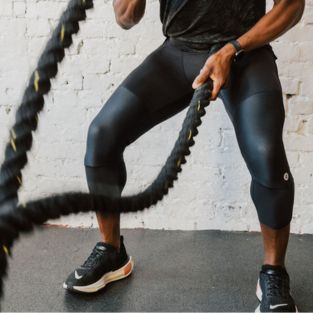
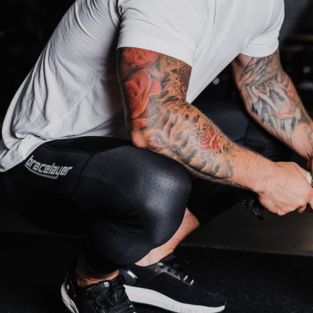
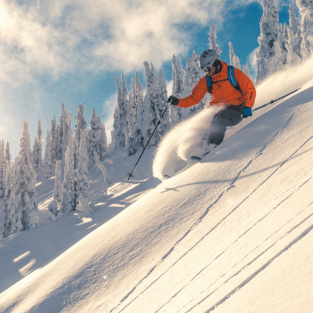
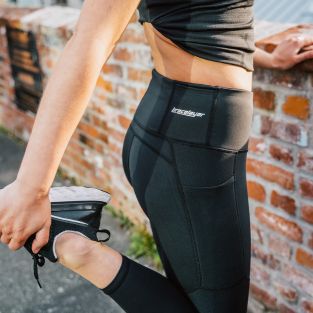
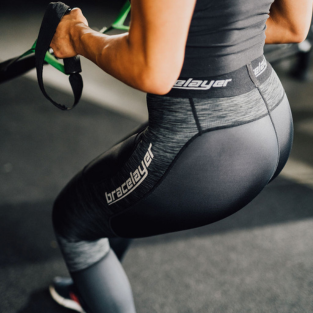

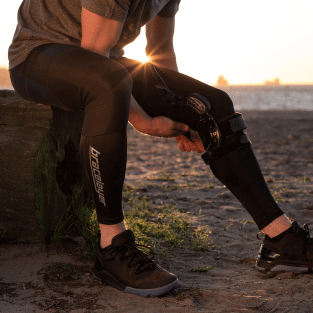
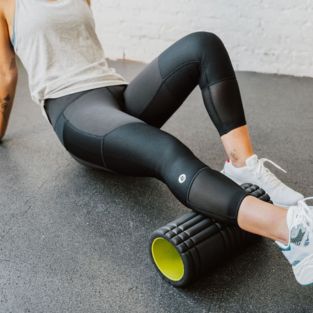
Leave a comment